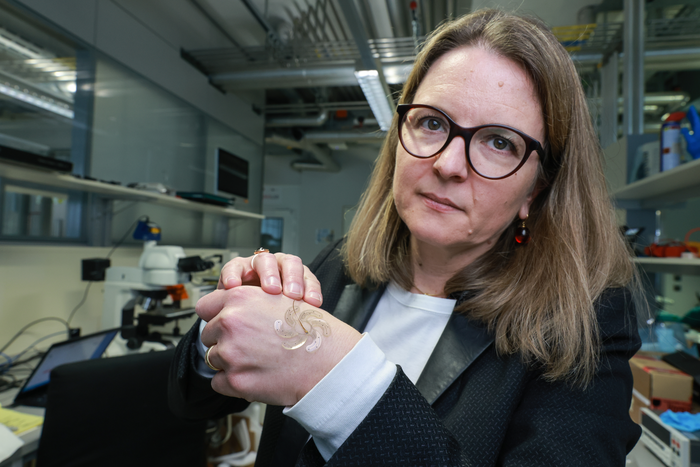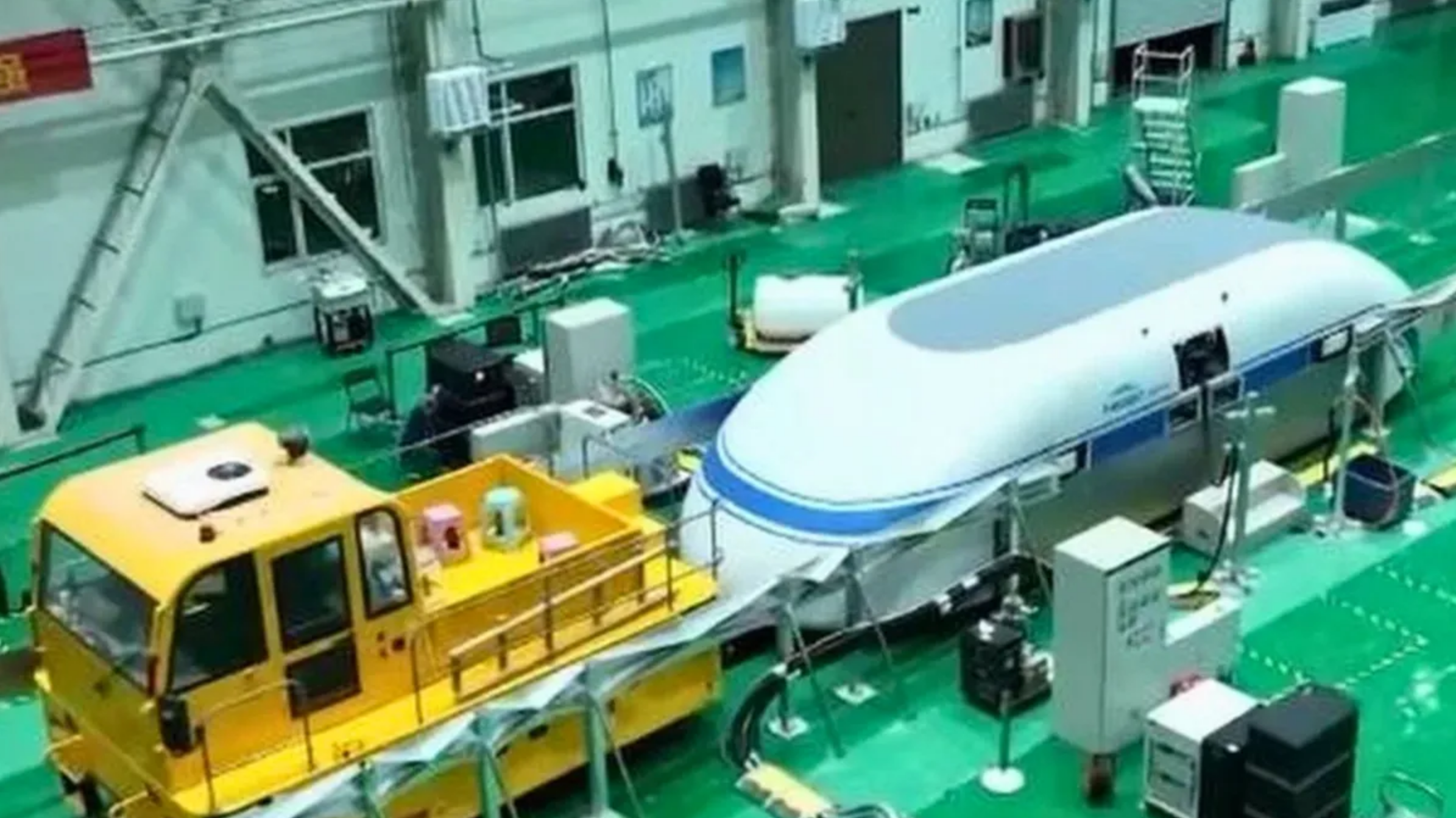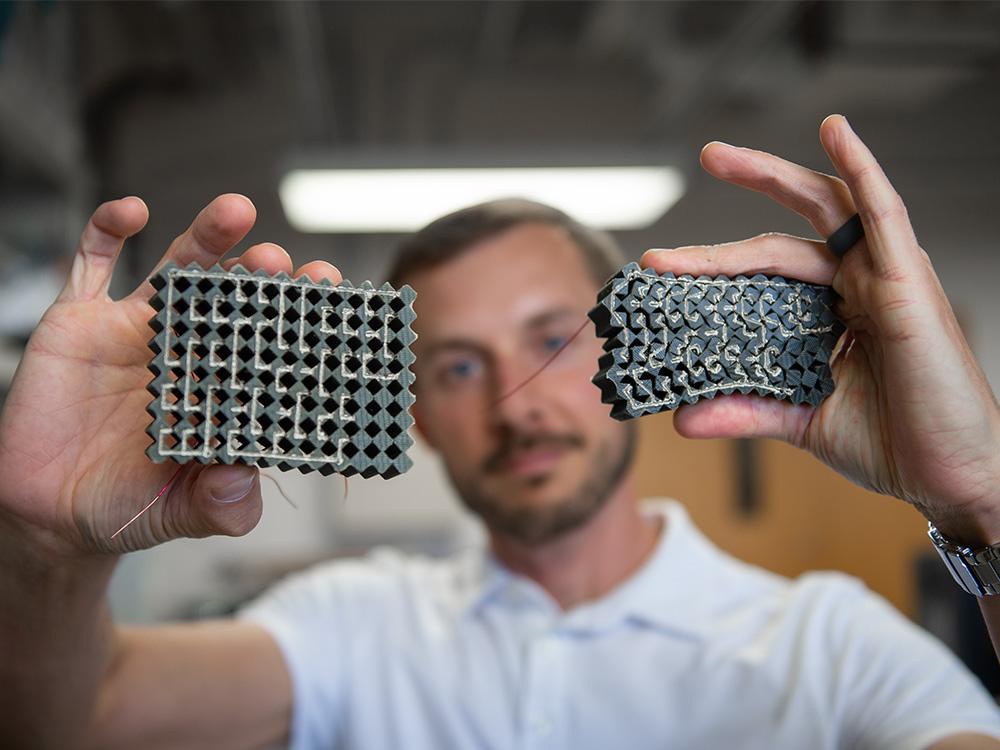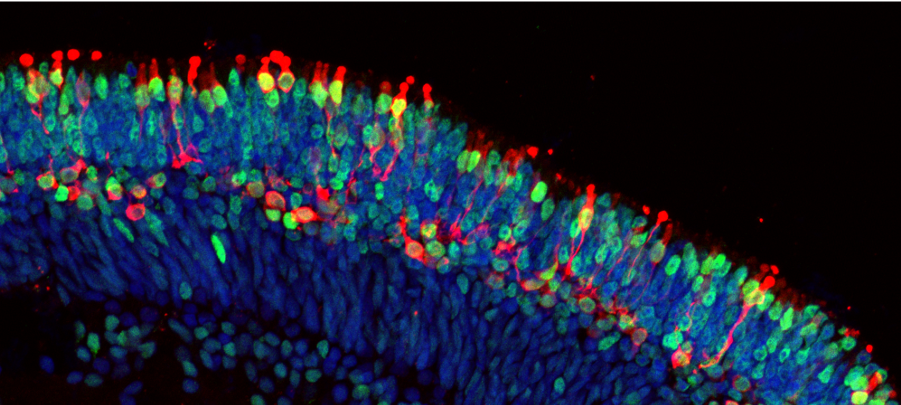Introduction
In the late nineties, Sam Cohen had a big problem. On paper, his life looked great. He was living in Germany and supervising a large portion of the US ITER effort. It was a big job [3]. Sam drove a fancy car. He had a nice salary. But Sam was having a personal crisis.
ITER was flawed. There were problems; big problems. Livermore had estimated that the core would be 60 times more massive than a common fission core [2]. That is a problem – and that was just the core. A five-fold obstacle is something an engineer can manage. But sixty-fold setbacks? Those problems kill the machines’ commercial chances. Sam knew this – and it dug at him.
Sam Cohen was faced with a choice. It was a choice many researchers have to face. Stick with ITER – or go off on his own. For people that want to make fusion work, this is an all too common situation. They want to make fusion work – but if they question the tokamak approach, they get pushed out.
Dr. Cohen decided to follow a new path. The technology he settled on was the Field Reversed Configuration. This was not a new idea. Over 40 of these machines have been built over the past five decades [29, 54, 41]. But Sam was adding in a twist: a new rotating magnetic field. Sam was building a Rotamak.
A Rotamak is a structure built out of plasma and maintained by a rotating magnetic field. This past year, Sams’ team announced the world record for the longest stable FRC, ever created by mankind [20, 55 – 62]. This is what drew me to his lab at Princeton in the spring of 2017. But to understand Sams’ story, we need to understand all the parts involved.
Part 1: Rotating Magnetic Field
A Light Electron, A Heavy Ion
Using a rotating magnetic field on a plasma was first suggested by Henry Blevin, in 1962 [50]. He was very clever. Blevin was trying to exploit the differences the between ions and electrons. Each are very different. Ions are massive. Deuterium is at least 3,600 times more massive than the electron [47, 48]. Electrons are light weight. This difference yields very distinct behaviors. Electrons will spin very fast. They move in quick, tight orbits. Because of their charge difference, ions and electrons spin in opposing directions [51]. This is shown below.
Blevin found a way to move just the electrons, but not the ions. He realized – that under the right conditions – he could whip the light electrons around while the heavy ions would stay unchanged. This was like wind blowing on leaf covered rocks. The leaves can be picked up by the breeze. But the rocks would stay put. They are too heavy. The electrons are like leaves; the magnetic field can move them. But, the ions will not move. This is a great technique. But this would only work under the right conditions.
Getting It Right
There are countless ways you can configure a plasma. You can mess with the: electric fields, magnetic fields, induced fields, geometries, charge concentrations, density, etc. There are a seemingly endless number of ways to set up a system. Blevin wanted a system where he could just heat the electrons. Such a scheme had to have three traits. First, it had to be collisionless [27, 50]. He did not want the spinning electrons to hit the ions. This would screw up his system. This is counter intuitive. Normally, fusion plasmas like collisions [52]. To make a plasma collisionless, you must heat it [49]. Hot stuff expands. It creates more space for things to move around. Ideally, you want the distance a particle can move without hitting something to be a 1,000 times higher than a characteristic [27]. A characteristic distance might be the length of the machine. This math is complicated, but I have pulled some equations for this below [27, 49, 63, 64].
The second requirement for this effect is that it happen in a cylindrical shape. That makes sense. The poles of the magnetic field need to be able to encircle the plasma. The best way to understand this, is to see it in a picture. Below is an example of plasma motion. Plasma motion is dictated by the Lorentz force [11]. Predicting motion of a single particle is tricky – it depends on the starting velocity and the presence of electric and magnetic fields. This example is exceedingly simple, there is only the plasma and a rotating magnetic field. Real life plasma is never so straightforward.
The north and south magnetic poles rest above and below the plasma. Single particles sit in the middle [12, 13]. Now the magnetic field rotates. The ions are unaffected – they are too heavy to move [50]. But, the electron starts to move. As the magnetic field moves around it, the electron rotates. This field whips up the electrons. They move faster. The field is transferring energy to the electrons, raising the temperature, speed and kinetic energy. Over time, electrons flow inside the plasma in a loop. This is a current inside a plasma. That pulls the ions into a loop with the electrons. A plasma loop has formed. The third and final thing needed to get this effect is the right spinning seed. Too fast and it will be powerful enough to move the ions – like a hurricane picking up small stones. Too slow and it will not affect the electrons. Effectively, this meant that the magnetic field must spin at the right frequency. Blevin reasoned that frequency should be higher than the frequency of the spinning ions, but lower than that of the electrons. This is plotted out below for deuterium plasma at different field strengths [47, 48, 52, 53, 50].
If done correctly, the effect will heat the electrons without touching the ions. That is awesome. That makes things simple. Blevin knew this; and he had already schemed about how you could use it. He knew that the technique would be most helpful in creating plasma loop [50]. Indeed, his 1962 paper closes with this sentence: “By combining the magnetic field of plasmas rotating about axes … a variety of self-excited dynamos can be imagined.” Blevin was right.
Part 2: Plasma Structures
Plasma Loops
Plasmas’ ability to self-organize comes from the fact that it conducts electricity. Plasma is a conductive soup of moving charges. All moving charge can make its’ own magnetic field [26]. You can exploit this, to build semi-stable structures out of plasma. Many approaches to fusion partially rely on this effect (General Fusion and ITER for example). But, there are only two that fully rely on structures in plasma. These are: the spheromak and the field reversed configuration. Both are basically smoke rings of charged plasma. Loops. Spinning donuts of charged stuff – held in free space – by magnetic fields. This is shown below [65]. You can see that this spinning makes a magnetic field, which self contains the material itself.
Both the Spheromak and the Field Reversed Configuration are loops like this. But, there is a slight difference between them. It is a small difference. The Spheromak has one extra field, running around the outside. It is a toroidal B-field that can run clockwise or counterclockwise [56]. In fact, the structures are so close together that some devices can switch between making one, the other, or both [56]. These are compared below.
Note the shapes shown. These loops do not have holes in the center. The material spins right up inside the center. The shapes can vary. They have been described as jelly donuts, tuna cans and Christmas tree ornaments. When the shape warps, distorts or otherwise twists – it is a sign the structure is falling apart [85]. It means that deadly instabilities are coming from the edge or the center to kill it [41, 3]. Both structures are nested inside a larger plasma environment. Outside, there is a normal field running from top to bottom, with stuff swirling around it. But on the inside, everything is flipped. Material spins in the opposing direction, making an inside field. This inside fields runs counter to its’ surroundings. These nested structures are reversed from one another. This is why this structure was first called a: “Field Reversed Configuration”.
Discovery
The Field Reversed Configuration was seen first. This was by accident [30]. In in 1960, researchers in England were working on a fusion pinch. The pinch was all the rage in the early days of fusion research. Pinches happen when current races down a tube of plasma. This makes a sharp inward field which crushes the ions in the center [66]. As researchers explored this parameter space, they made a weird observation. For a brief moment, the plasma was oddly stable. As they explored this further, they found the ions and electrons were forming their own structures [30]. In the 57 years since their discovery, over forty machines have been built to explore both FRCs and Spheromaks [41, 29]. Below is some typical details on these machines [3, 20, 55 – 62,]. Note the annual amount of money spent on this research.
Advantages
Why are plasma structures so great? The question should really be rephrased: what are the advantages IF these approaches end up becoming a power plant? It turns out that plasma structures like the Spheromak and the Field Reversed Configuration could have three distinct advantages. First, the plasma inside the FRC is hotter than its’ surroundings [40]. This is critical: in fusion, heat helps [67]. More heat means that anytime two ions collide, they are more likely to fuse. Secondly, the surrounding machine is simpler than a tokamak. By making their own fields, plasma structures need smaller external magnets then a tokamak. And unlike a tokamak, they do not require an inner column [56]. In a sense, these approaches shift the complexity away from the engineering – and into the plasma itself. The third advantage is that these structures could be more efficient than a tokamak. They could better hold on to both mass and energy.
Efficiency
To see how plasma structures stack up (efficiency-wise) to other fusion approaches – you need to grasp a few problems that effect fusion. To understand this better, I have put together a quick chart of these effects and families of approaches.
On the left is a list of effects that can hurt each approach. These are physical effects with plague fusion. They kill machine efficiency by leaking mass and energy. Mass loss is synonymous with energy loss – stolen particles steal heat out of system with their exit. The first the loss is through the walls. Metal conducts plasma. If plasma touches it, it is gone. I have seen three clever ways to beat this problem. All approaches try to put space between their plasma, and the walls. They also try to use dipole magnetic fields to shield metal parts in plasma. Finally people have built their walls out of Pyrex (glass), which conducts less [76, 77]. Nothing is perfect – in all cases conduction still finds a way to sneak in and steal mass away. Ideally, a tokamak has a gap between its wall and plasma – but stuff still finds a way touch the walls [78]. Plasma structures handle this problem a bit better. They are surrounded by more plasma. Since these structures do not touch walls directly, it mitigates this problem. Finally, cusp confinement approaches like Lockheed or the Polywell could go either way [77, 79]. Ideally, their plasmas hit a high pressure surface when it tries to escape [80]. This could be an awesome barrier, removing wall losses. At the same time, cusp systems need big metal magnets, very close to the plasma. We do not know. The human race has barely test a this kind of trap – so it is too early to judge cusp confinement fairly. Magnetized and idealized cusp confined plasma are compared below [78, 79, 83, 84].
Efficiency – Scattering & Radiation
The next problem in this chart is leaking through a curved field. In curved fields, the plasma wants to moves into the outside fields [78]. Plasma likes to move towards the broader, wider fields, on the fringes. Eventually it is flung outwards – striking the walls. Because they both rely on curved fields – both tokamaks and plasma structures will have this problem [78, 25]. By contrast, the ideal cusp confinement system will have fields that are bent inwards. This pushes material into the center – lowering this loss problem. This is such a big problem that we designed an entirely new machine to deal with this: the Stellarator. A Stellarator is a twisted tokamak [81]. With each twist, it tries to push material back into the center. Again, the goal here is to better hold in the plasma. The last problem is energy lost as light. All fusion plasmas bleed energy away as light. This comes out as IR, UV, X-Rays and in the visible spectrum. Energy loss as light becomes worse, in situations where the plasma mixes with an external magnetic field [82]. Particles are deflected by these fields and when they do they lose energy as light. Because they rely on external magnetic fields, this problem should be more pronounced in tokamaks and spherical tokamaks. By contrast, plasma structures and cusp confined plasma have spots where the external magnetic does not enter the inner plasma [78, 79, 83, 84]. This lowers the fields in the plasma; which lowers radiation losses. It would never be zero – plasma has self-made fields that cannot be escaped. These fields cause deflections, making light rays, which bleed energy away. Lowering radiation is one of the most unexplored directions in fusion. If we can lower these losses, we could have a more efficient power plant.
Formation
Though they have many advantages, plasma structures do have a few problems. First and foremost, they are tricky to make. A loop of plasma can arise in many different ways [33 – 46]. In the figure below, I have drawn out the four methods to make a Field Reversed Configuration [56, 30].
The first method is pretty straightforward. A beam of material is shot into some plasma. As these beams of particles pass by, they “kick up” spinning loops of plasma. Think of a boat passing by and leaving a wave behind it – that is a great analogy for what is happening. These are Field Reversed Configurations. Sometimes this is accidental. For example, tokamaks use beams to heat their plasma. This kind of loop in a tokamak would be unintended. The second formation method is with a pinch [56]. Specifically: a theta pinch. A theta pinch is when a magnetic field runs down a plasma column and current spins around the outside [72]. That spinning current can pull plasma along – making a plasma loop [1]. Incidentally, pinch researchers found that if they “turn up” the spinning current, they can convert an FRC into a spheromak [56]. This is why one machine (a theta pinch) can toggle between making either structure. The last two methods are: colliding spheromaks and the rotating magnetic field [37]. One of these methods is currently being pursued by the worlds’ largest fusion startup [86].
Colliding Spheromaks
In the foothills of Los Angeles, there is company known as Tri Alpha Energy. This is a fast moving startup. The company’s goal is to try and change everything about the energy world. Tri Alpha has raised over half a billion dollars to build a fusion power plant [73]. At the heart of their approach is an FRC made by colliding spheromaks [68]. The company is extending work in this field which stretches back to the mid-eighties [17, 24, 25]. It knows it must get the delicate process of making these plasma structures right. They have to generate two spheromaks, move them together, merge them, stabilize them and then keep them spinning. This fragile operation is shown below and modelled here [37].
Using metal rings, you setup fields which oppose each another. Then you release plasma. The field pivots. It switches from being made by the metal rings; to being made by the plasma donuts. These are the spheromaks. They can then be moved by varying magnetic fields around them [29]. These fields guide the spheromaks into the center, where they merge, forming a new structure. Next, the company tries to hold the structure by keeping it spinning. This is done by firing particle beams along its’ edge [28]. This is like kicking the loop, to keep it spinning. The CEO of the company describes it as “keeping a top spinning, by continuously flicking it” [28]. Maintaining the spin is key. If not, deadly instabilities can come in the center or along the edge to kill it [41, 3]. It is generally accepted that the FRC can only live for a hundred microseconds, or less, before collapsing [3, 20, 55 – 62]. But as of today, Tri Alpha is ahead of all of its’ competitors, in its’ ability, to hold a large, long lasting FRC stable [57, 68]
Part 3: The Rotamak
A Rotamak
The last way to make and sustain a plasma structure is with a rotating magnetic field. This is known as a Rotamak. A rotamak is a combination of the ideas discussed in parts I & II. A rotamak is a field reversed configuration made using a rotating field. The rotating field can actually help either a Spheromak or an FRC, but of these, the FRC is better assisted [1]. The value of adding these effects together is clear. It simplifies most of the machine three ways. The heating, generation and stabilization of the plasma structure can be done with one technique. Creating a plasma structure with a rotating magnetic field is an easy way to start the machine. By spinning the field, we can get a current moving in the plasma. This drags the ions along – making a loop of ions. That technique is far simple than the collision mechanism described above. Secondly, a RMF offers a simple way to heat the plasma. Such a method is non-invasive and non-disruptive. Lastly, the rotamak can keep the plasma stable. Last year, Sam Cohens’ team announced they had held a small FRC sixty times longer than Tri Alpha. This is a tiny group at Princeton against a sizeable startup. Sams’ research could have moved much faster, had the US government properly funded their work.
Rotamak History
The person who deserves the most credit for the Rotamak was the Professor Ieuan Jones. He got a doctorate in plasma physics from Aberystwyth University, in Wales, in the fifties [15]. For more than two decades, he was a professor at Flinders. During all those years, Dr. Jones developed the idea, publishing paper after paper [10]. He built a machine known as the Flinders Rotamak [15, 16, 18, 19]. Ieuans’ work did not go unnoticed. In 1986, the US Department of Energy took an interest [20]. They commissioned a company named STI to build such a machine. Construction took four long years. Once finished, the Large S Experiment (the LSX) was installed at Los Alamos [17]. It was an exciting time. But – idiotically – the government nixed the program just one short year later. Spending four years, for just one year of testing – is yet another example of stupid funding choices in fusion.
University of Washington
In 1992, the neglected machine was salvaged by two men: Dr. John Slough and Dr. Alan Hoffman [20]. Both were professors at the Redmond Plasma Physics Lab, at the University of Washington. They moved the abandoned device to Seattle, in hopes to restart the effort. Getting the funding was tough. They had to rejigger both the machine and the effort to focus on tokamaks [74]. Stupid policies by the Department of Energy demanded that efforts show relevance to the ITER. This went on for four years, until August of 1996. After this, the team finally got the support they needed; they received $4,018,000 in funding for four more years of work. They built the TCS machine (translation confinement and sustainment). This machine used a rotating magnetic field to study plasma structures [7]. It worked well. It showed a great deal of promise. Unfortunately, the effort was killed by the Department of Energy, in 2003. A stupid move. Only a few years later, the entire Redmond Plasma Physics Lab was shut down. After 2009, the facility was closed due to lack of funding [21]. Today, you cannot visit the place, the building houses a motorcycle factory [69]. Dr. John Slough was determined to continue this kind of work. He has developed two startups (Helion and MSNW) which are trying to turn this approach into commercial products [22, 23].
Sam Cohen
It is at this point that Sam Cohen re-enters our story. At about the same time the Redmond lab was being shut down, Sam started making plans to build a Rotamak at Princeton [3, 4]. His idea was simple: stabilize, generate and heat the plasma in a FRC, with a rotating magnetic field. He did this, by making a column of plasma [27]. The plasma bounced back and forth inside a Pyrex tube, reflected at each end [3]. Technically he used a magnet mirror to do this. Around the pyrex would be a rotating magnetic field. The north and south poles spin around the plasma forming, heating and stabilizing the structure. This mechanism shown below [1, 13, 14, 27, 57].
At the start, the magnetic field is straight on – from left to right [27]. The plasma corkscrews through this field. The particles spin; moving along the field lines, like cars on the highway, bouncing back and forth at each end. The ions spin on a wide path while the electrons spin in a much tighter orbit [13, 47, 57]. It is in this environment, that the rotating field is activated. When it is turned on, the field lines bend. They warp. The magnetic fields add together. They re-form, into a curved field; the field lines are pulled up. When this happens, the particles move upwards, in tow. The next step is to start spinning the RMF. Spinning causes the field lines to bow outwards like shells. In the picture above, they looks like concentric shells. At this point the electrons are effected. Their speed rises, whipped up by the fast field [1]. The electrons move in a loop; tugged along by the RMF. Altogether, all plasma motion gets tighter. The electrons’ speed up and their temperature rises. Finally the plasma snaps: turning into a full-on FRC [3]. Now, the spinning plasma makes its’ own field. A structure forms: a donut of spinning plasma. Once formed, the rotating field keeps the structure hot, spinning and stable [1, 3, 55].
Conclusion
Like so many fusion approaches, the rotamak has been hurt by a lack of US government funding. The US is not leading in fusion research. This is dangerous and I have been repeating this for 9 years. The US dominance in military, economic and political matters is underpinned by our scientific advancement. If we fail to hold the edge, we will fail this country. Our lack of funding for fusion has already killed off the ecosystem of researchers needed to develop it. If humanity invented net power today, the US military would be caught completely off-guard. It would be a disaster. They would have no scientific talent to turn too to jump-start a program. It would take years, and would leave our country dangerously vulnerable. Net power is the next milestone in this field. This could come at any time and from any direction. Do not assume it is decades away. Today, there are several companies who see a path to a commercial power plant [75]. Today, China has invested tens of millions into an advanced fusion-fission center, which that years ahead of the Americans [70]. What is our government doing? Where is the leadership? This must change.
Sources
1. “Jones, Ieuan R. “A Review of Rotating Magnetic Field Current Drive and the Operation of the Rotamak as a Field-reversed Configuration (Rotamak-FRC) and a Spherical Tokamak (Rotamak-ST).” Physics of Plasmas 6.5 (1999): 1950-957. Web. 27 Apr. 2017”
2. Hirsch, Robert L. “Fusion Research: Time to Set a New Path.” Issues in Science and Technology 31, no. 4 (Summer 2015).
3. Dr. Sam Cohen, Private Conversation, in person, 4-19-2017.
4. Cohen, Samuel A., and Alan H. Glasser. “Ion Heating in the Field-reversed Configuration (FRC) by Rotating Magnetic Fields (RMF) near Cyclotron Resonance.” Physical Review Letters 85.24 (2000): n. pag. Web. 27 Apr. 2017. <http://mnx.pppl.gov/docs/cohen2000prl.pdf>
5. I. R. Jones “The rotamak concept” Technical Report No. FUPH-R-151, Flinders University (1979)
6. Brennan, M.h., A.d. Cheetham, and I.r. Jones. “Observation of the Nonlinear Interaction of Torsional Hydromagnetic Waves.” Physics Letters A 46.7 (1974): 437-38. Web. 27 Apr. 2017.
7. Hoffman, A.l, H.y Guo, R.d Milroy, and Z.a Pietrzyk. “Resistivity Scaling of Rotating Magnetic Field Current Drive in FRCs.” Nuclear Fusion 43.10 (2003): 1091-100. Web. 27 Apr. 2017. <http://iopscience.iop.org/article/10.1088/0029-5515/43/10/010>.
8. “Discussions with Dr. Matthew Lilley.” Online interview. 09 Oct. 2016.
9. “Dr. Alex Klien, Full Interview, The Fusion Podcast.” Interview by Alex Klien and Matthew Moynihan. The Fusion Podcast. N.p., 9 Sept. 2016. Web. 27 Apr. 2017.
10. Jones I R 1979 “The Rotamak Concept” Flinders University Report FUPH-R-151 (February 1979) NTIS-PB85-133858.
11. “Lorentz Force.” Wikipedia. Wikimedia Foundation, 26 Apr. 2017. Web. 27 Apr. 2017.
12. Alfven, Hannes, and Carl-Gunne Falthammar. Cosmical Electrodynamics: Fundamental Principles. Oxford: Clarendon, 1963. Print.
13. Fitzpatrick, Richard. “Notes on Magnetized Plasmas – Electron and Ion Gyroradius.” Magnetized Plasmas. N.p., 2008. Web. 27 Apr. 2017.
14. Hugrass, William. The field induced in a conduction sphere places in a steady field and a perpendicular oscillatory magnetic field. Dissertation. The Flinders U of South Australia, 1981. Adelaide: school of physical sciences, 1981. Print.
15. “Obituaries: Tributes to Three of Our Finest.” The Advertiser, Adelaide, 2 Dec. 2011. Web. 27 Apr. 2017. <Obituaries: Tributes to three of our finest>.
16. Cohen, Sam. “Sam Cohen Homepage.” PPPL Staff Homepages. Princeton Plasma Physics Laboratory, Web. 27 Apr. 2017. <Sam Cohen>.
17. Hoffman, Alan. “FRC on the Path to Fusion Energy (Moderate Density Steady-State Approach)” http://Http://fire.pppl.gov/fpa06_hoffman_frc.pdf. The 2006 Fusion Power Associates Meeting. Washington DC. 27 September 2006. Lecture.
18. “Alan Hoffman.” UW A&A – Faculty – A. Hoffman. N.p., n.d. Web. 27 Apr. 2017. <UW A&A – Faculty – A. Hoffman>.
19. “Power-Technology News and Views from the Power Industry.” Dr. John Slough, Who Invented the Fusion Engine, Is Chief Scientific Officer at Helion Energy. Courtesy of University of Washington. – Image – Power Technology. N.p., n.d. Web. 27 Apr. 2017. <Dr. John Slough, who invented the Fusion Engine, is chief scientific officer at Helion Energy. Courtesy of University of Washington.>.
20. Hoffman, Alan L. “The TCS program – Translation, Confinement, and Sustainment of Frcs – Final Report.” The Redmond Plasma Physics Laboratory Web. 27 Apr. 2017. <https://web.archive.org/web/20111206141151/http://depts.washington.edu/rppl/papers/TCSrpt03.pdf>.
21. “The Redmond Plasma Physics Laboratory.” Presentations and Meetings. The Wayback Machine, 2011. Web. 27 Apr. 2017. <Presentations and Meetings>.
22. Slough, John. “Home – Basic.” Helion Energy. N.p., n.d. Web. 27 Apr. 2017. <Home – Basic>.
23. Slough, John. “Company Homepage.” MSNW LLC. N.p., n.d. Web. 27 Apr. 2017. <MSNW LLC>.
24. “Rotamak Room.” Solar Observatory. Texas A&M University, Web. 27 Apr. 2017. <Solar Observatory>.
25. “Princeton Field-reversed Configuration Experiment.” Wikipedia. Wikimedia Foundation, 22 Mar. 2017. Web. 27 Apr. 2017. <Princeton field-reversed configuration experiment – Wikipedia>.
26. Nave, R. “Hyper Physics.” Magnetic Forces. The University of Georgia, n.d. Web. 27 Apr. 2017. <Magnetic forces>.
27. Cohen, S. A., B. Berlinger, C. Brunkhorst, A. Brooks, N. Ferraro, D. P. Lundberg, A. Roach, and A. H. Glasser. “Formation of Collisionless High-B Plasmas by Odd-Parity Rotating Magnetic Fields.” Physical Review Letters 98.14 (2007): n. pag. Web. 27 Apr. 2017
28. Tri Alpha Energy Introduction. Perf. Interview with Dr. Michl Binderbauer. Tri Alpha Energy. Tri Alpha Energy Inc., 22 Oct. 2015. Web. 27 Apr. 2017. <Tri Alpha Energy>.
29. Tuszewski, M. “Field Reversed Configurations.” Nuclear Fusion 28.11 (1988): 2033-092.
30. Green, T. S. “Evidence for the Containment of a Hot, Dense Plasma in a Theta Pinch.” Physical Review Letters 5.7 (1960): 297-300. Web.
31. Kolb, A. C., et al. “Field Mixing and Associated Neutron Production in a Plasma.” Physical Review Letters 3.5. 4 June 1954.
32. “M. Tuszewski, Micheal. “A New High Performance Field Reversed Configuration Operating Regime in the C-2 Device.” Physics of Plasmas 19 (2012):
33. Pietrzyk, Z.a., G.c. Vlases, R.d. Brooks, K.d. Hahn, and R. Raman. “Initial Results from the Coaxial Slow Source FRC Device.” Nuclear Fusion 27.9 (1987): 1478-488. Web.
34. Goldenbaum, G., J. Irby, Y. Chong, and G. Hart. “Formation of a Spheromak Plasma Configuration.” Physical Review Letters 44.6 (1980): 393-96. Web.
35. Nogi, Yasuyuki, Hiroaki Ogura, Yukio Osanai, Katsunori Saito, Shouichi Shiina, and Hisamitsu Yoshimura. “Spheromak Formation by Theta Pinch.” Journal of the Physics Society Japan 49.2 (1980): 710-16. Web.
36. Jones, W. B. “Generation and Motion of Plasmoids in a Magnetic Field with Mirrors.” Physics of Fluids 11.7 (1968): 1550. Web
37. Slough, John. “MOQUI Simulation of Two FRCs Colliding.” YouTube. MSNW LLC, 27 Mar. 2013. Web. 11 Jan. 2015.
38. Gerhardt, S. P., E. Belova, M. Inomoto, M. Yamada, H. Ji, Y. Ren, and A. Kuritsyn. “Equilibrium and Stability Studies of Oblate Field-reversed Configurations in the Magnetic Reconnection Experiment.” Physics of Plasmas 13.11 (2006): 112508. Web.
39. Jardin, S. C., and M. Yamada. “Status and Promising Directions for Field Reversed Configuration Research.” Conference Summary. Princeton Plasma Physics Laboratory, 8-9 June 1999. Web. 12 Jan. 2015.
40. Slough, John, and David Kirtley. “Nuclear Propulsion through Direct Conversion of Fusion Energy: The Fusion Driven Rocket.” NIAC Spring Symposium (2012): Pasadena, CA. Web. 27 Mar. 2012.
41. Steinhauer, Loren C. “Review of Field-reversed Configurations.” Physics of Plasmas 18.7 (2011): 070501. Web.
42. Pert, GJ. “Comments on Comparison of a Two‐Dimensional Snowplow Model with Experiment”.” Physics of Fluids 12.7 (1969): 1528. 1529. Web. 29 Mar. 2015.
43. Rosenbluth, M., and A. Rosenbluth. “Infinite Conductivity Theory of the Pinch.” Los Alamos Scienctific Laboratory – Controlled Thermonuclear Processes (1955): Web. 29 Mar. 2015.
44. “Chapter 2: The Pinch Effect.” PhD Theses (n.d.): 13-29. Welcome to Pakistan Research Repository. Pakistan Research Repository. Web. 29 Mar. 2015. <Page on Home>.
45. Slutz, Stephen, and Roger Vesey. “High-Gain Magnetized Inertial Fusion.” Physical Review Letters 108.2 (2012): n. pag. Web. 29 Mar. 2015. <High-Gain Magnetized Inertial Fusion>.
46. Srivastava, Krishna M., and F. Waelbroeck. “On the Stability of the Screw Pinch in the CGL Model.” Journal of Plasma Physics 16.03 (1976): 261. Web.
47. “Proton-to-electron Mass Ratio.” Wikipedia. Wikimedia Foundation, 09 June 2012. Web. 01 Sept. 2012.
48. “Deuterium.” Wikipedia. Wikimedia Foundation, 06 May 2017. Web. 07 May 2017.
49. Fitzpatrick, Richard. “Notes on Plasma Parameters, Collisions.” Collisions. The University of Texas at Austin, 2007. Web. 07 May 2017.
50. Blevin, Henry, and P. C. Thonemann. “Plasma Confinement Using An Alternating Magnetic Field.” Nuclear Fusion (1962): 55-60.
51. The Editors of Encyclopedia Britannica. “Lorentz Force.” Encyclopedia Britannica. Encyclopedia Britannica, Inc., Web. 07 May 2017.
52. Spitzer, Lyman. Physics of Fully Ionized Gases. Mineola, NY: Dover, 2006. Print.
53. “Gyroradius.” Wikipedia. Wikimedia Foundation, 14 Nov. 2016. Web. 07 May 2017.
54. Steinhauer, Loren C. “Review of Field-reversed Configurations.” Physics of Plasmas 18.7 (2011): 070501. Web.
55. Cohen, Sam, and B. Berlinger. “Long-pulse Opera.on of the PFRC-2 Device.” The Joint US-Japan Compact Torus. Wisconsin, Madison. 22 Aug. 2016. Lecture.
56. Dolan, Thomas. Magnetic Fusion Technology. Vol. 2. New York City: Springer, 2012. Print.
57. Jaspers, Roger. “Introducing Alternative Fusion Concepts: Tri Alpha Energy.” EUROfusion, 27 June 2016. Web. 11 May 2017.
58. Victor, B. S., T. R. Jarboe, A. C. Hossack, D. A. Ennis, B. A. Nelson, R. J. Smith, C. Akcay, C. J. Hansen, G. J. Marklin, N. K. Hicks, and J. S. Wrobel. “Evidence for Separatrix Formation and Sustainment with Steady Inductive Helicity Injection.” Physical Review Letters 107.16 (2011).
59. Cothran, C. D., M. R. Brown, T. Gray, M. J. Schaffer, and G. Marklin. “Observation of a Helical Self-Organized State in a Compact Toroidal Plasma.” Physical Review Letters 103.21 (2009): n. pag. Web. 11 May 2017.
60. “Question For The Author.” Message to Tim Gray. 11 May 2017. E-mail.
61. “Simple Question.” Message to Derek Sutherland. 11 May 2017. E-mail.
62. “Interview with Derek Sutherland” The Fusion Podcast, August 2016
63. “Thermal Velocity.” Wikipedia. Wikimedia Foundation, 11 Apr. 2017. Web. 12 May 2017.
64. 2017 NRL PLASMA FORMULARY. J.D. Huba. Beam Physics Branch. Plasma Physics Division. Naval Research Laboratory. Washington, DC 20375.
65. Nave, R. “Magnetic Field of Current.” Magnetic Fields of Currents. The University of Georgia, Web. 15 May 2017.
66. Kruskal, M D; Schwarzschild (1954). “Some Instabilities of a Completely Ionized Plasma”. Proc. R. Soc. Lond A. 223: 348–360. Bibcode:1954RSPSA.223..348K. doi:10.1098/rspa.1954.0120.
67. Lindemuth, Irvin R., and Richard E. Siemon. “The Fundamental Parameter Space of Controlled Thermonuclear Fusion.” American Journal of Physics 77.5 (2009): 407-16. 18 Feb. 2009.
68. Binderbauer, Michl. “A High Performance Field-reversed Configuration: Physics of Plasmas: Vol 22, No 5.” Physics of Plasmas. Tri Alpha Energy, May 2015.
69. “Home.” Ural Motorcycles – Seattle Manufacturing Offices. N.p., n.d. Web. 16 May 2017.
70. Wu, Yican. “Activities of the Institute of Nuclear Energy Safety Technology.” The 2016 Fusion Power Associates Meeting, An International Venture. Washington DC, Washington DC. 16 Dec. 2016. Lecture.
71. “Plasma physics and controlled nuclear fusion research Vol 1” International Atomic Energy Agency Conference proceedings (1974). http://www.iaea.org/inis/collection/NCLCollectionStore/_Public/06/197/6197673.pdf.
72. “Pinch, Theta-Pinch.” EUROfusion. N.p., n.d. Web. 16 May 2017. <Pinch, Theta-Pinch | EUROfusion>.
73. Martin, Richard. “Go Inside Tri Alpha, A Startup Pursuing the Ideal Power Source.” MIT Technology Review (2016): n. pag. Web. 20 May 2016. <The quest to achieve sustainable nuclear fusion>.
74. Steinhauer, Loren. “FRC 2001: A White Paper on FRC Development in the Next Five Years.” (March 1996): Web. 16 May 2017. <http://www-ferp.ucsd.edu/PUBLIC/AC-PANEL/REC-DOCS/W-PAPERS/frc-2001.html>.
75. Moynihan, Matthew J. “An Industry Emerges.” The Polywell Blog. N.p., 18 Jan. 2015. Web. 16 May 2017. <An Industry Emerges>.
76. “A Personal Interview with Doug Coulter.” In person interview. Floyd, VA. 11 June 2016.
77. McGuire, Thomas, Font Gabriel, Artan Qerushi, and Lockheed Martin Team. Lockheed Poster: “Martin Compact Fusion Reactor Concept, Confinement Model and T4B Experiment”. American Physical Society, Division of Plasma Physics 2016 Conference. Lockheed Martin, 29 Oct. 2016. Web. 3 Dec. 2016.
78. Wesson, John, and D. J. Campbell. Tokamaks. Oxford: Oxford UP, 2011. Print.
79. Park, Jaeyoung, Nicholas A. Krall, Paul E. Sieck, Dustin T. Offermann, Michael Skillicorn, Andrew Sanchez, Kevin Davis, Eric Alderson, and Giovanni Lapenta. “High-Energy Electron Confinement in a Magnetic Cusp Configuration.” Physical Review X 5.2 (2015)
80. “The Worlds Best Plasma Trap.” The Polywell Blog, 7 Nov. 2015. Web. 16 May 2017.
81. “Stellarator.” Wikipedia. Wikimedia Foundation, 12 May 2017. Web. 16 May 2017.
82. Burton, Milton, and Myron Luntz. “Radiation.” Encyclopedia Britannica. Encyclopedia Britannica, Inc., 14 Apr. 2017. Web. 16 May 2017.
83. J. L. Tuck, A new plasma confinement geometry, Nature (London) 187, 863 (1960).
84. Berkowitz, J., K.o. Friedrichs, H. Goertzel, H. Grad, J. Killeen, and E. Rubin. “Cusped Geometries.” Journal of Nuclear Energy (1954) 7.3-4 (1958): 292-93. Web. 16 June 2014.
85. Belova, E.v., R.c. Davidson, H. Ji, and And M. Yamada. “Global Stability of the Field Reversed Configuration.” IAEA (2002). <http://www.iaea.org/inis/collection/NCLCollectionStore/_Public/33/029/33029226.pdf>.
86. “Tri Alpha Energy, Size of Staff” Wikipedia. Wikimedia Foundation, 12 May 2017. Web. 17 May 2017.









